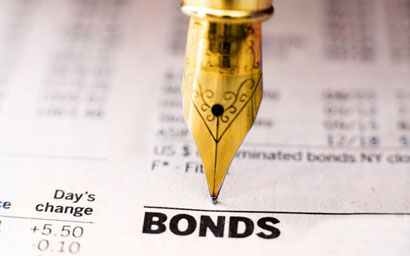Despite increasing popularity, fixed income significantly lags equities in the responsible investing field. Funds labelled by analytics firm Morningstar as “sustainable” accounted for $1.8 trillion (€1.6 trillion) of assets as of mid-2019 – but fixed income strategies made up only one fifth of these.
Funds Europe speaks with experts in the field to find out what it means to implement environmental, social and governance (ESG) criteria in a fixed income portfolio, and what the main challenges are.
Leslie Sita, client portfolio manager at Lombard Odier Investment Managers
What are the main challenges facing investors when it comes to integrating ESG in fixed income?
When it comes to integrating sustainability, traditional fixed income markets have often been referred to as the “neglected child” because progress in this space has historically lagged that of equity markets. Today, we believe that view is misguided.
Sustainable investing, particularly in the context of identifying downside risk, is arguably even more important for fixed income investors, given the bondholder’s primary objective: to receive the principal investment back from the company on a future maturity date that can be long dated. Fixed income approaches have been slower to embed sustainability considerations in part because of the differences between the bond and equity markets. The methods for integrating sustainability in equity portfolios cannot simply be transferred across to fixed income.
On the last point, there has been a general misconception that sustainability is not as applicable to fixed income investments since bondholders do not have the voting rights or influence of equity holders. While the concept of stewardship is typically associated with equity investments, we believe it is equally relevant for bondholders, especially for corporate bonds.
Kevin Kwok, vice-president, fixed income and ESG research at MSCI
Can a fixed income ESG fund ever justify investing in certain sectors such as oil/tobacco/weapons (if so, how)?
It is important to understand that the world’s energy usage continues to increase even though we always hear conversations of transitioning towards a low carbon economy or preventing climate change. It is estimated more than half of the world’s energy will come from oil and gas in 2040 driven mainly by electricity, which constitutes about 70 percent of the energy demand increase. There is an environmental rebound effect, where people indirectly using more energy through the increase in carbon-intensive behaviors related to consumption. All sectors are looking to manage their ESG risks and opportunities in a consumer society. However, there are values and ethics investors who strongly believe that investing in oil, tobacco, weapons, etc. will continue feed an already unsustainable society. On the other hand, transitioning from these negative contributions has been a slow progress. There’s the saying “if you don’t invest in it, someone else will.” Some investors believe negative screening will only reduce portfolio diversification and yield.
My-Linh Ngo, head of ESG risk at BlueBay Asset Management
Is it feasible to have an industry-wide set of standards for implementing ESG criteria in bonds portfolios?
I believe it is possible to have broad principles for good practice in terms of the ‘what’ of ESG investing, such as around incorporation, engagement, collaboration, transparency and so on. The ‘how’, I think will vary both for different asset classes, and within each. Each investor has different motivations when it comes to ESG and this has implications for the appropriateness of specific ESG investment strategies. At most you could argue ESG integration should be the minimum ‘how’ criteria, but then even how each manager approaches this effectively in a way that is ‘right’ for them may depend on organisational specific factors such as culture, organisational governance and size.
Florian Sommer, head of ESG strategy at Union Investment
What kind of ESG abuses might one find in an ESG fixed income portfolio/how big an issue is greenwashing in ESG-focused bonds?
The exposure to ESG risks – such as bribery scandals, green regulation risks, litigation – is not fundamentally different in fixed income compared to equity. However, high ESG risk sectors, such as energy, metals and mining, and utilities, are very prominent in fixed income indices and portfolios. Proper ESG analysis minimises the risk of investing in ESG laggards and greenwashing issuers.
©2019 funds europe





